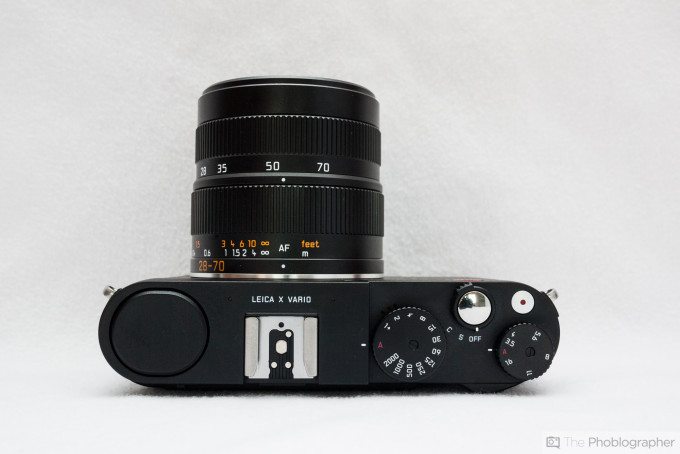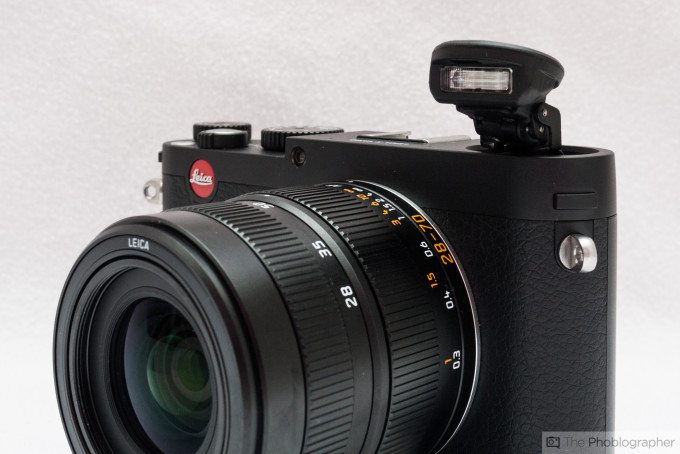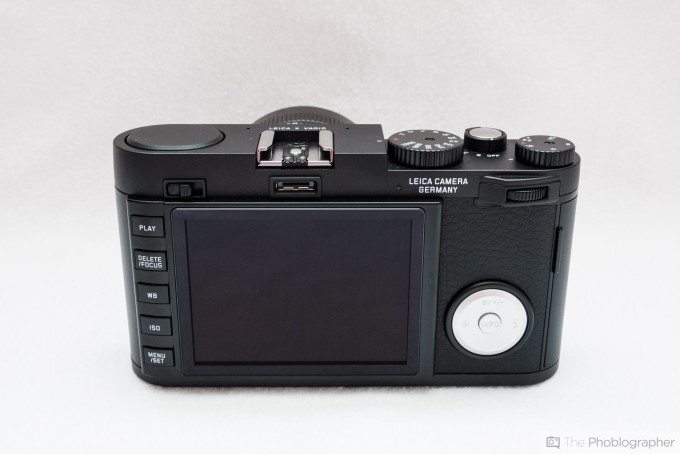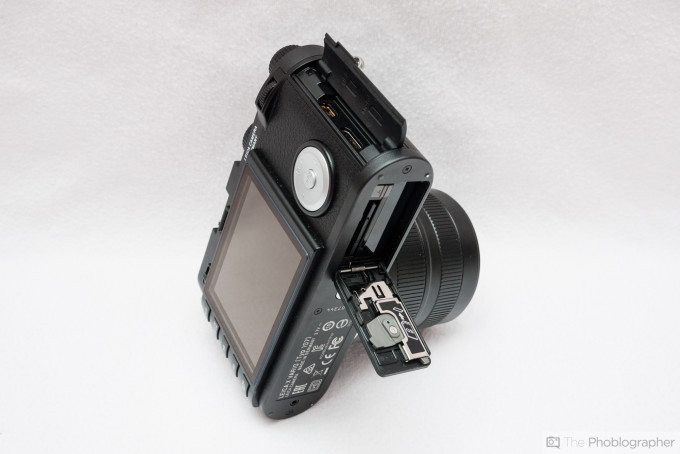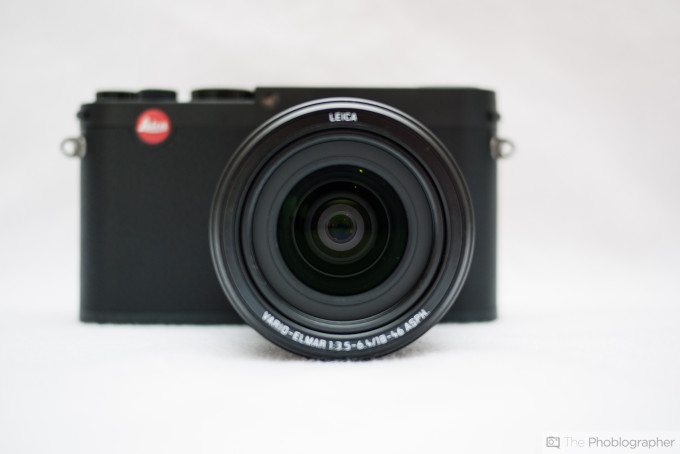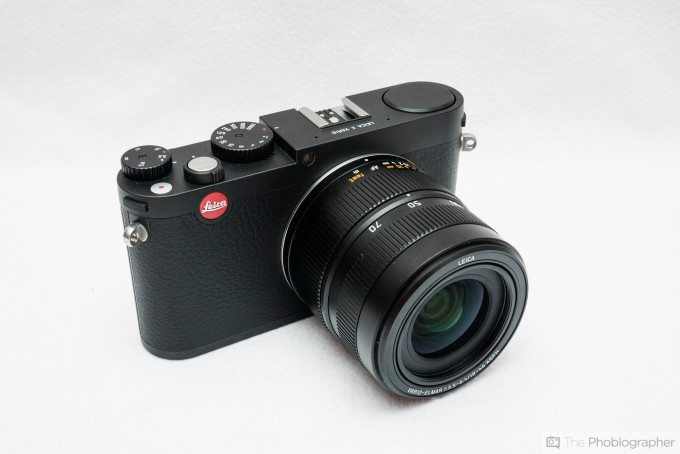 When Leica announced the X Vario and boldly touted it as a “Mini M”, even the die-hard Leica fanboys weren’t amused. Voices ranged from, “Blasphemy!” over, “Where is that entry-level M-mount mirroless APS-C camera we’ve been asking for?” to a more reasonable, “What the heck? This is not an M!” And while it would have the notorious Leica-haters outraged over another ‘overpriced’ and ‘utterly useless’ fixed-lens APS-C compact that would ‘never be able to hold a candle to the [popular camera model X]’, it had even those that were generally Leica-friendly confused at least. Why did the company decide to put a slow zoom lens on their latest X-series camera? Read our first impressions with this controversial camera to find out.
When Leica announced the X Vario and boldly touted it as a “Mini M”, even the die-hard Leica fanboys weren’t amused. Voices ranged from, “Blasphemy!” over, “Where is that entry-level M-mount mirroless APS-C camera we’ve been asking for?” to a more reasonable, “What the heck? This is not an M!” And while it would have the notorious Leica-haters outraged over another ‘overpriced’ and ‘utterly useless’ fixed-lens APS-C compact that would ‘never be able to hold a candle to the [popular camera model X]’, it had even those that were generally Leica-friendly confused at least. Why did the company decide to put a slow zoom lens on their latest X-series camera? Read our first impressions with this controversial camera to find out.
Tech Specs
Taken from the B&H product page
- 16.1MP APS-C CMOS Sensor
- 18-46mm Zoom Lens (35mm Equiv: 28-70mm)
- 3.0″ 920k-Dot, Wide-Angle LCD Monitor
- HD 1080/30 Video with Sound
- Wind-Cut Filter for Audio Clarity
- Manual Focusing Ring, Manual Exposure
- Built-in Flash, Hot Shoe
- ISO 100-12500
- Solid Aluminum / Magnesium Construction
- Free Adobe Photoshop Lightroom Download
Ergonomics
Oh, Leica. What have you done there. I’ve never been so thrilled and so disappointed with a camera’s ergonomics at the same time. While Leica has done a number of things dead-on right with the X Vario, other aspects are downright frustrating.
As with so many cameras before it, the company deserves some major Kudos for the layout of the main controls. Leica did exactly the right thing when they gave the original X1 a shutter speed and aperture dial instead of the classic PASM mode dial. By a flick of either dial, you can set the camera to program mode (‘A’ on both dials), aperture priority (‘A’ on the shutter dial only), shutter priority (‘A’ on the aperture dial only) or go fully manual. Brilliant.
But … why did the design team think it’s reasonable to put 1/3-stop clicks on the aperture dial, but only full-stop clicks on the shutter speed dial? It’s not like the shutter is unable to fire at intermediate speeds like 1/80 sec. And honestly, who ever adjusts their aperture at 1/3-stop values? The reasonable thing to do here would’ve been to give both the aperture and the shutter speed dial 1/2-stop clicks. And why is there no indication of the flash-sync speed on the shutter speed dial like on the M?
Next up: the power switch. Ingeniously placed around the shutter button and acting as a drive switch at the same time. But why didn’t they add a self-timer position like they do on the M? It’s not like you can use the self timer and the continuous drive mode at the same time, anyway. Instead, the self-timer is activated via the rear controls (more on those later.)

Then there’s that awkwardly placed movie button. Instead of putting it in the upper-rightmost corner of the top plate between the shutter button and aperture dial, where everyone over the age of twelve will have trouble squeezing their finger through, they could’ve placed it on the rear where it could be operated by the thumb.
On the upside, what’s absolutely brilliant is the manual focus ring around the lens. I just wish every fixed-lens camera came with a focusing ring like this. It’s got an ‘A’-position for autofocus, and as soon as you slightly twist it to the right, it comes to a hard stop at the infinity setting. And unlike most modern digital cameras (or lenses for digital cameras) that focus way beyond infinity, the X Vario’s lens focuses precisely to infinity when the focusing ring is at the infinity setting. This is especially helpful when taking pictures of the sky or of stars or landscapes in the dark.
The camera focuses down to .3 meters (1 ft), but only at the 70mm-equivalent zoom setting. If you’re below 70mm-e and try to manually focus down to .3 m, you’ll get a warning on the display. Also, as soon as you move the focusing ring, you’ll see the center portion of the image magnified in the center of the screen. Nothing new, but very clever and tremendously helpful. The implementation of manual focus is probably the best part of this camera.
The little pop-up flash is activated by a slider on the rear, and pops up with a solid chunky noise. The same goes for when you retract it again. But as with most things about the X Vario, this, too, raises a question. Why can it not be tilted upward to bounce from the ceiling? Eludes me.
The rear of the X Vario looks rather similar to that of the M Typ 240, with the large 3″ LCD dominating the scene. Left of it are five direct-access buttons, while the four-way controller with central button is to the lower right of it. At the upper right of the X Vario’s back is the conveniently placed control dial, which is easily operated by the thumb and at the same time serves as a thumb rest for additional stabilization when holding the camera with one hand. Also notice the previously mentioned slider that opes the pop-up flash, top left of the display. Below the flash hot-shoe is the familiar accessory port that feeds the electronic viewfinder, as known from the X2 and the Olympus PEN cameras since the E-P2.
Now to the controls. From top to bottom, this is what the five buttons left of the display do:
- ‘PLAY’ — activates the playback mode.
- ‘DELETE/FOCUS’ — deletes an image in playback mode, selects between 1-point, 11-point, spot and face-detection focus in recording mode. When pressed slightly longer, the focus point can be moved using the four-way controller.
- ‘WB’ — opens the white balance dialog in playback mode.
- ‘ISO’ — opens the ISO dialog in playback mode.
- ‘MENU/SET’ — opens the menu. In the menu, it sometimes confirms a setting, while at other times discarding it. The logic behind this is presumably evident only to Leica engineers.
The four-way controller has an ‘INFO’ button in the center which changes the info displayed on the LCD while in recording or playback mode. The top, left, and right positions are pre-set with additional shortcuts for the self-timer (left), exposure compensation (top) and flash (right).
Here, more questions arise. First, where is the AE/AF-lock button? It is entirely impossible with the X Vario to uncouple autofocus and metering. I checked every possible setting in the menu. The only workaround I found is to focus manually and save the metered exposure by half-pressing the shutter button. Again, this makes sense probably only to Leica engineers.

Also, there is no quick way of dialing in exposure compensation when you’ve already focused and metered. Like, turning the control dial. Noooo. That would’ve been far to obvious, wouldn’t it. Instead, you have to press the up position of the four-way controller, change the EV by pressing either its left and right positions or by using the control dial (aha!), and finally confirm the setting with the ‘MENU/SET’ button (this is one of the few times where it actually sets a setting, as its name suggests.) Awkward and unpractical.
And while we’re at it, why is the menu button not, like with almost any other camera out there, in the center of the four-way controller? That would be much more convenient and would allow to operate the camera almost exclusively single-handed. And why is it that the button that reads ‘MENU/SET’ only sometimes confirms a setting, while at other times discarding it and returning to the previous menu level? And why does the user have to confirm a setting by using the right and left positions of the four-way controller at those other times?
I admit that you can get used to all of this. But if you come from cameras with more intuitive interfaces, the X Vario is both highly irritating and frustrating to use at first. I don’t know if this is some sort of we-do-it-differently-just-because-attitude, or if the Leica engineers actually had their reasons. But from a user perspective, there are some aspects about the X Vario that should’ve been solved differently.
Finally, the flaps at the right and bottom. Not much to say here. Under the flap on the right you’ll find a USB and an HDMI port, while the flap on the bottom gives access to the SD card and the battery. One of the few aspects of the X Vario’s ergonomics where Leica got it right.
Build Quality
This is part of what you pay for when shelling out almost $3k for this camera. The build is simply superb. Every single part of the X Vario feels solid. From the flaps over the buttons and dials to the focus and zoom rings, this camera is one solid piece of craftsmanship. Add to that its considerable weight, and it almost feels like a brick in your hand. Less rough, of course.
Autofocus
Ah, yes. Autofocus. The X1 was a disappointment in that regard. The X2 slightly improved on it. Now, the X Vario … well, it autofocuses, but that’s about it. It’s neither fast nor reliable, unfortunately. When it does lock focus, it does so precisely. But during the short time I spent with it so far, I was more than once frustrated with the slow speed and low reliability of the X Vario’s autofocus.
I am a friend of small focusing areas, so naturally I would choose the spot focus setting. However, the X Vario really only tries to focus on what’s inside the tiny area of the spot focusing field. When there’s too little contrast to work with, it simply gives up. Switching to the slightly larger field of the 1-point setting helps here, or focusing manually (which is, as I explained before, brilliantly solved.)

When the light gets dim, the X Vario will activate the AF assist lamp, which sheds a soft orange light on the scene you’re trying to focus on. This helps a lot, but AF is still considerably less quick and accurate than in good light. And even in good light, it is far from quick …
Ease of Use
As should be evident from the sections on ergonomics and autofocus, the ease of use of the X Vario is a mixed bag. There are some aspects about it which are absolutely brilliant and make using the camera a breeze (such as the focusing ring or the shutter speed and aperture dials), while others leave the user irritated and/or frustrated (the placement, assignment and/or lack of buttons, for example.) I’d say there definitely is a considerable learning curve with the X Vario. But as soon as you get comfortable with it, it works mostly like any other digital camera.
Image Quality
In terms of pure image quality, the Leica X Vario is right there with the best APS-C cameras currently on the market, if not even better. The sensor delivers superb image quality at the lower ISO settings, and even at ISO 6400 the images are perfectly usable, without much loss of detail or color accuracy. Highlights can be pulled if shots are overexposed, while shadows can be pushed by several stops without noise creeping in.

As for sharpness, the combination of the stellar lens (we’d expect nothing less from a Leica) with the lack of an anti-aliasing filter on the sensor makes for some very beautiful files with loads and loads of fine detail. And here’s the answer to the question raised in the initial paragraph, namely why Leica opted to put such a ‘slow’ lens on the X Vario: in order to get the best compromise between size, cost, and image quality.
A faster lens would’ve been larger, and would probably not have been as sharp wide open. By restricting the maximum aperture to f3.5 at the wide end and f6.4 at the long end, Leica’s engineers ensured that the X Vario would provide excellent overall image quality under all circumstances. Even wide open, there is no vignetting, no distortion, and great sharpness all over the frame. Only the corners improve slightly upon stopping down.

And since the X Vario’s sensor delivers such great results even at higher ISOs, there is no need really for a faster lens–unless of course you’re a bokeh junkie, but then this camera clearly isn’t the right one for you. I’ve taken pictures in dim light at the 70mm-equivalent setting and ISOs as high as 6400, and came away with perfectly usable images. So much for the naysayers that bashed the X Vario for its lens before they even had a chance to try it.
A note on the X Vario’s files: the DNG raw files that come out of it have pretty strong colors to begin with. Also, I found that using the ‘Embedded’ camera profile would oversaturate the red channel, so I opted for the ‘Adobe Standard’ profile in Lightroom. I found that I had to constantly dial down the overall saturation in order to achieve a balanced look. So here as well the X Vario needs some practice.

And another point of critique here: why is it not possible to record raw files only with the X Vario? Why can I only choose between JPEG and JPEG+DNG? Another case of the elusive Leica logic.
First Impressions
After a week of using it, I’ve developed quite a liking for the X Vario. It feels great in your hand, and the main control dials are such a joy to use. The image quality is stellar, and the files it outputs provide huge latitude for post-processing. On the downside, some of the most basic functionality is lacking from the X Vario (such as an AE/AF-lock button), while some of the ergonomic choices made by the design team are questionable at best (such as the menu options and button placement.)
I have one more week with it, during which I will also test its video functionality. I will save my final verdict for the full review.
Additional Images









Please Support The Phoblographer
We love to bring you guys the latest and greatest news and gear related stuff. However, we can’t keep doing that unless we have your continued support. If you would like to purchase any of the items mentioned, please do so by clicking our links first and then purchasing the items as we then get a small portion of the sale to help run the website.


